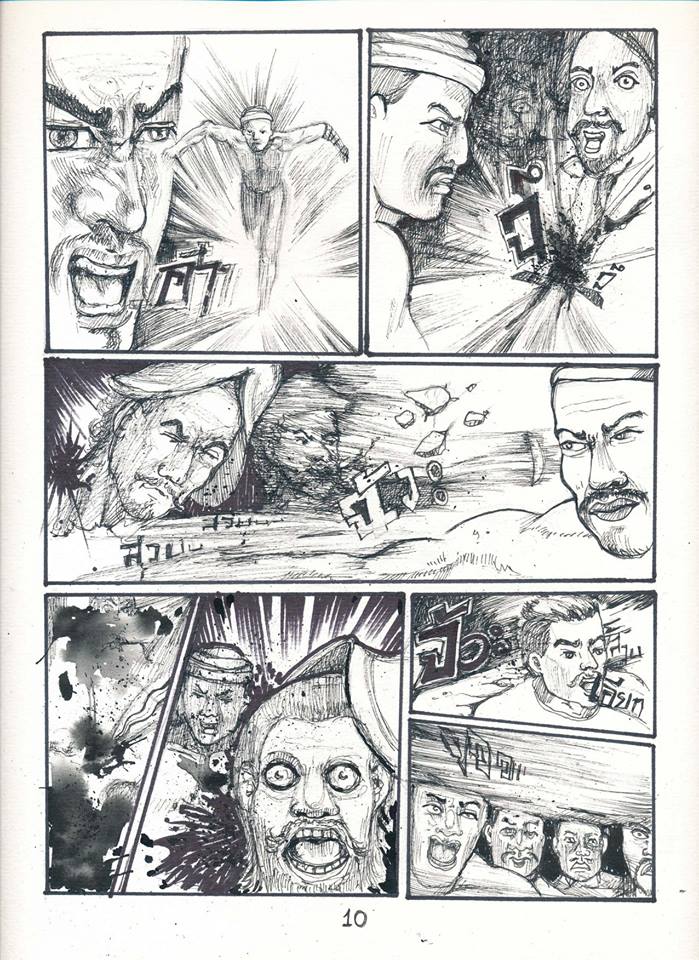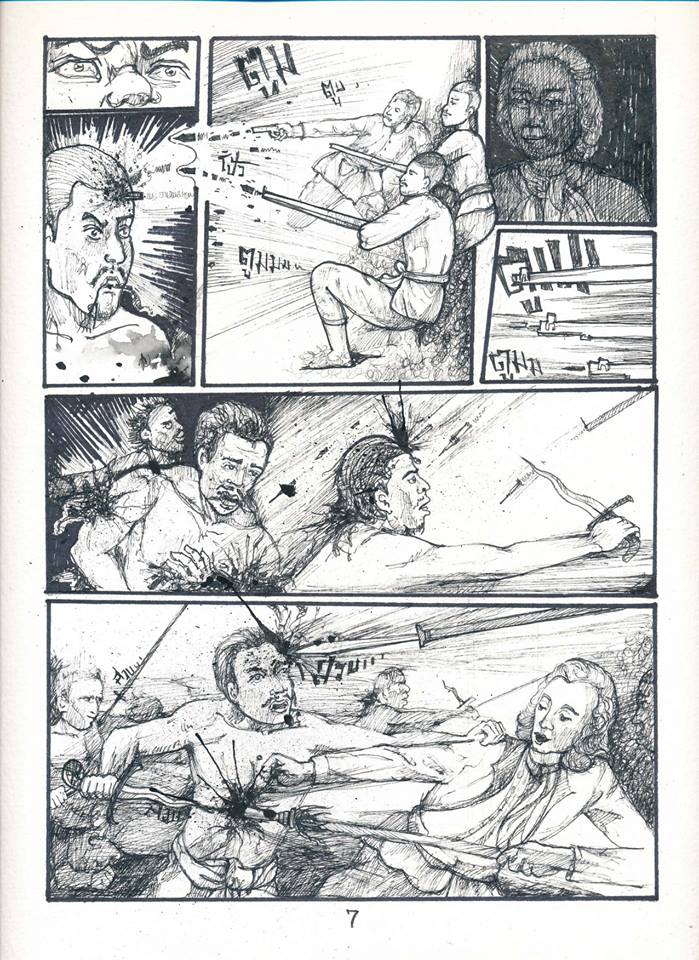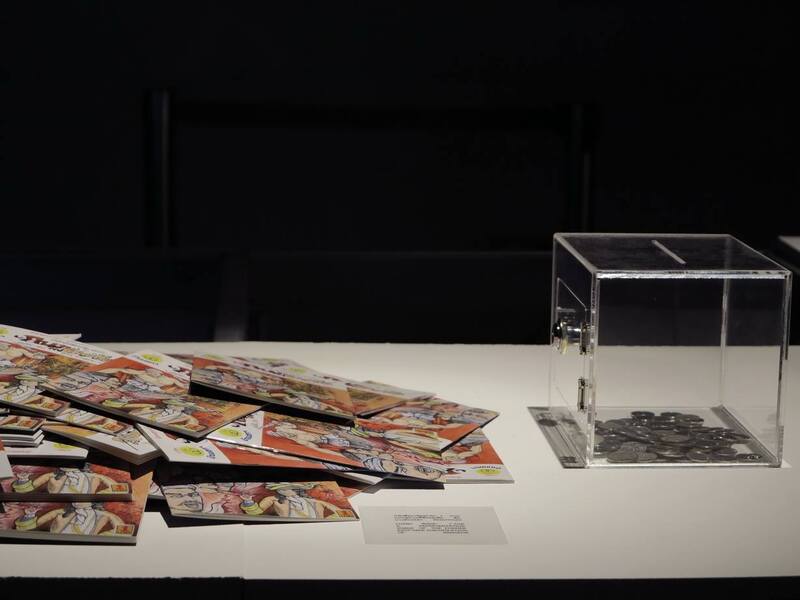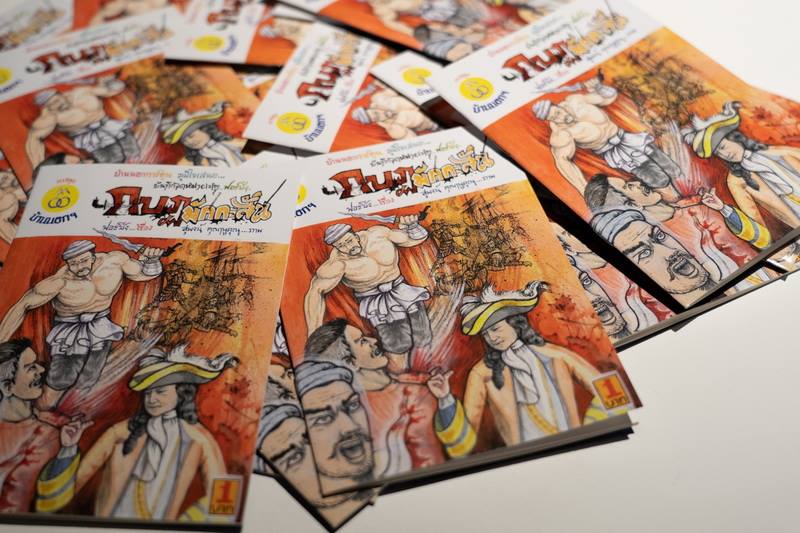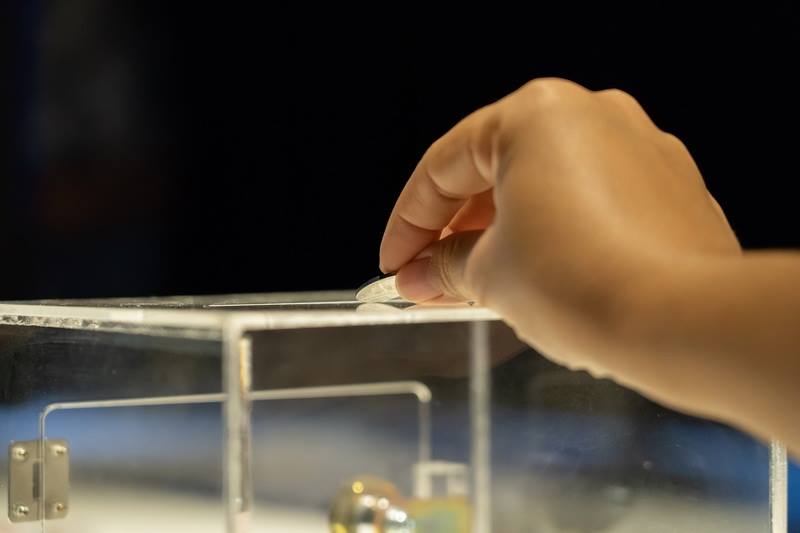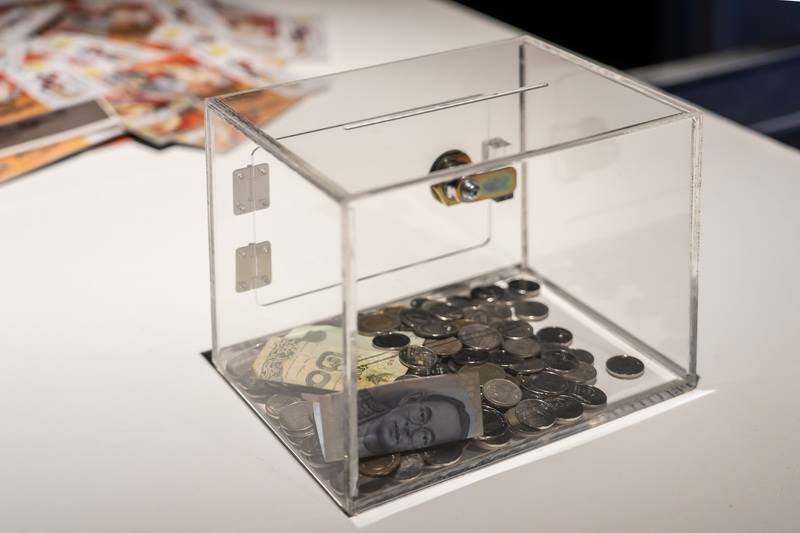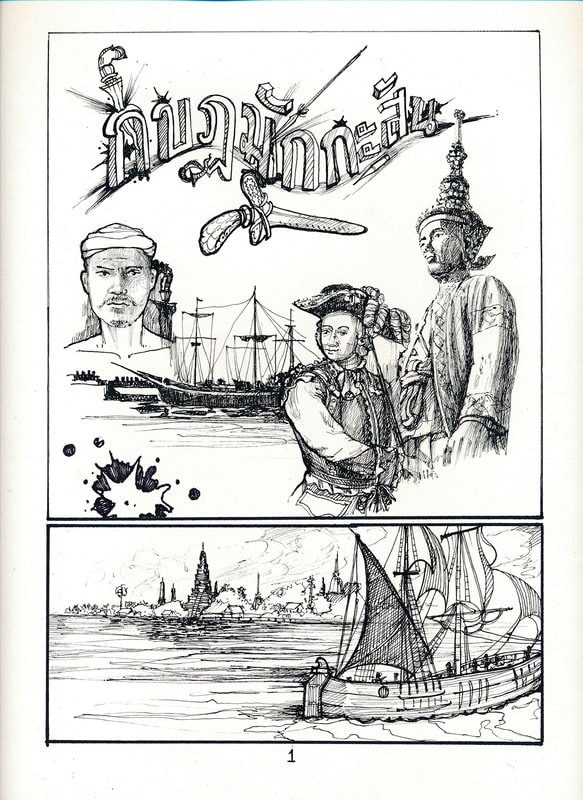Makassar Rebellion
Supot Kunanukun
In collaboration with Baan Noorg Collaborative Arts and Culture
Supot Kunanukun, born in 1976, lives and works in Chiang Mai, received Master’s Degree from Faculty of Fine Arts Department of Visual Arts, Chiang Mai University. He has been interested in Thai traditional techniques in using adhesive from tamarind, white clay filler and pigments from natural materials such as carbon stone and color from Indigofera tinctoria plant. His art works and paintings often associate with historical study. His contemporary painting was seen on Terengganu Palace’s wall, Malaysian and Buddha history paintings at Nong-Or Temple, Chiang Mai. For Bangkok Layers exhibition project, Supot studied information from all sorts of historical documents, integrated them as an illustration set derived from Royal chronicles collection no. 50, chapter 80, in Forbin’s archive letter, focusing the details of a chronicle incident of Makassar rebellion that occurred on the east fortress - a horrified incident and battle for Bangkok residents during 1688. The precise chronicle was documented by Chevalier de Forbin or Ok Phra Sakdi Songkhram (grand admiral), governor of Bangkok and General of the Armies at the time. He was assigned to seize the rebels who came by boat from Ayutthaya through Bangkok town, accidentally eventuated to a bloodshed battle while entering the estuary. When the rebels realized the capturing plan, they fought back with their weapons or kris, murdering numerous Thai, Thai-Portuguese, French, British, monks and civil armies. In the Makassar rebellion cartoon series, the artist includes onomatopoeia that simulates virtual situation as similar as reading text without voices of conversation as representation of the incident and a reflection of the history, simultaneously. The imagination captured from chronicle images of the archive letter has achieved through storytelling without narratives in order to separate text from imagination over reading. It conveys intervention over the excluded texts, allowing possession and management towards place and space as well as interpretation through reader’s imagination - a mechanism for excavation and reinterpretation on historical context which lies beyond the limitation of historical knowledge.
Supot Kunanukun
Makassar Rebellion, 2018
Comic strip, 13 x 19 cm, 1,000 copies
In collaboration with Baan Noorg Collaborative Arts and Culture
Supot Kunanukun
In collaboration with Baan Noorg Collaborative Arts and Culture
Supot Kunanukun, born in 1976, lives and works in Chiang Mai, received Master’s Degree from Faculty of Fine Arts Department of Visual Arts, Chiang Mai University. He has been interested in Thai traditional techniques in using adhesive from tamarind, white clay filler and pigments from natural materials such as carbon stone and color from Indigofera tinctoria plant. His art works and paintings often associate with historical study. His contemporary painting was seen on Terengganu Palace’s wall, Malaysian and Buddha history paintings at Nong-Or Temple, Chiang Mai. For Bangkok Layers exhibition project, Supot studied information from all sorts of historical documents, integrated them as an illustration set derived from Royal chronicles collection no. 50, chapter 80, in Forbin’s archive letter, focusing the details of a chronicle incident of Makassar rebellion that occurred on the east fortress - a horrified incident and battle for Bangkok residents during 1688. The precise chronicle was documented by Chevalier de Forbin or Ok Phra Sakdi Songkhram (grand admiral), governor of Bangkok and General of the Armies at the time. He was assigned to seize the rebels who came by boat from Ayutthaya through Bangkok town, accidentally eventuated to a bloodshed battle while entering the estuary. When the rebels realized the capturing plan, they fought back with their weapons or kris, murdering numerous Thai, Thai-Portuguese, French, British, monks and civil armies. In the Makassar rebellion cartoon series, the artist includes onomatopoeia that simulates virtual situation as similar as reading text without voices of conversation as representation of the incident and a reflection of the history, simultaneously. The imagination captured from chronicle images of the archive letter has achieved through storytelling without narratives in order to separate text from imagination over reading. It conveys intervention over the excluded texts, allowing possession and management towards place and space as well as interpretation through reader’s imagination - a mechanism for excavation and reinterpretation on historical context which lies beyond the limitation of historical knowledge.
Supot Kunanukun
Makassar Rebellion, 2018
Comic strip, 13 x 19 cm, 1,000 copies
In collaboration with Baan Noorg Collaborative Arts and Culture
